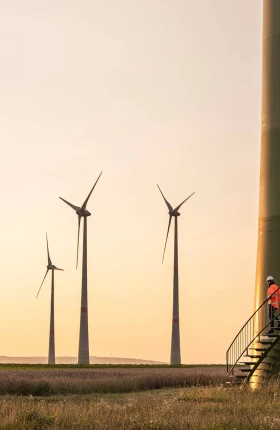Governments today are recognizing the urgent need for effective adaptation and resilience plans. But the extraordinary complexity of climate hazards means there’s no easy answer. Climate risks are interrelated, can impact different locations in different ways, and are hard to predict. Each region also has multiple stakeholders, who may have different views of the tradeoffs involved in adaptation plans. In short, most governments simply aren’t set up to solve these challenges over the long term.
Leaders need to develop climate adaptation and resilience strategies that address this complexity. Crucially, these strategies should have a mix of solutions that address each community’s environmental and socioeconomic needs while maximizing limited resources. Such strategies must also be highly localized. The impact of rising sea levels on a nation’s coast, for example, can vary widely based on elevation, the distribution of the population, and local economic activities. Accordingly, the solutions will also vary widely.
To identify the best portfolio of solutions, leaders need to first understand how the complex array of hazards will impact their particular communities, economies, and ecosystems. Coalescing around a common set of facts will help bring stakeholders together. How many lives and jobs will be upended? What are the population’s demographics? What will happen to critical economic assets, such as farms, factories, roads, and airports? What is the impact on biodiversity?
Understanding these factors will help clarify the tradeoffs between different solutions. Governments have finite resources to invest in adaptation, so it’s critical to get the highest social and economic return possible for every dollar spent. A strong, qualitative fact base is also key when seeking funding and collaborating across public and private sectors.
Leaders must understand how the complex array of climate hazards will impact specific communities, economies, and ecosystems.
Here’s an example from one Southeast Asian nation we’ve been working with. We analyzed how rising sea levels compounded by storm surges and heavier rain would impact one coastal region. Under one scenario, around 2,000 square kilometers would be permanently flooded. Other areas would be hit by more frequent flooding, and 100,000 people would face risk of displacement. We estimated the economic cost of inaction at $3 billion, with an 18% loss in capital assets and 8% decline in local GDP.
We identified measures that could protect 100,000 livelihoods and greatly reduce economic loss. But the optimal solutions varied by community and location, even within the same region. In some areas, building a sea wall would make the most sense. In others, it would be better to move populations. In still others, the greatest payoff would come from restoring mangroves.
There’s no crystal ball, of course. Climate systems are very dynamic. But data and a focus on socioeconomic impacts can help leaders work through this complexity to determine how best to deploy the available resources—and in the process, help local communities adapt and become more resilient to the effects of climate change.







